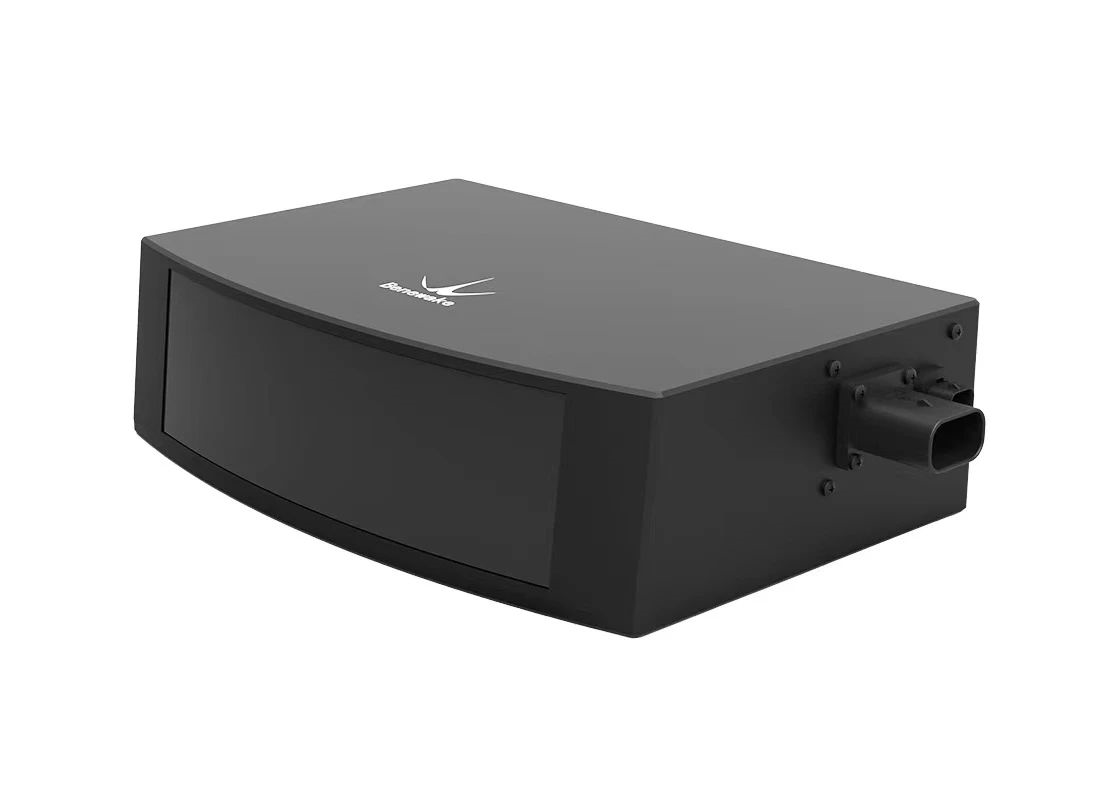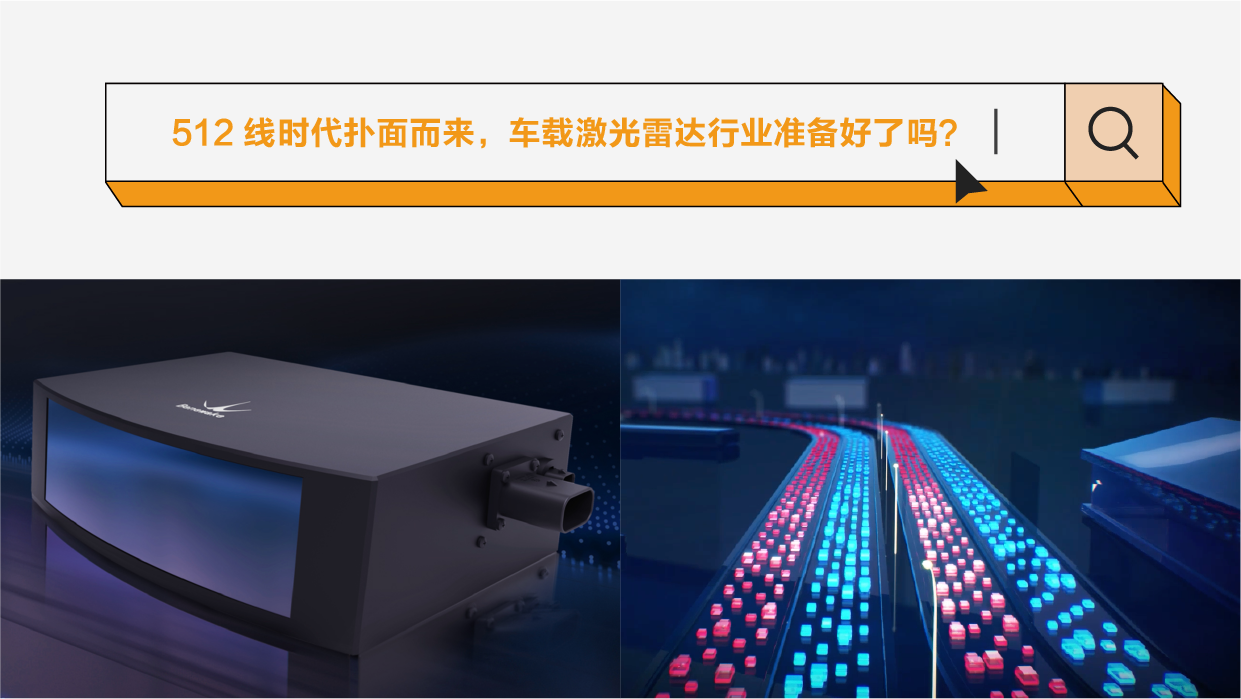Author: Zhao Yuepeng
What are the bottlenecks that limit the large-scale commercial use of lidar?
If it was two or three years ago, practitioners’ opinions might include “expensive prices,” “difficult to pass vehicle regulations,” and “unable to achieve scale production.”
As vehicles equipped with lidar gradually enter the market, these problems seem to be solved.
However, this does not mean that the “difficulties in the large-scale commercial use of lidar” have been solved. Compared with the millions of shipments of cameras and millimeter-wave radars each year, the number of lidars mounted on vehicles has just exceeded tens of thousands this year.
As the CEO of Beixin, Li Yuan said, the car-mounted lidar market is still in its early stages.
Also, because it is in a great window period, Beixin is actively promoting the evolution of the new generation of lidars and trying to achieve large-scale commercial use of lidar by “cross-generation production” onto vehicles.
Starting with 512 line lidar
The “debut” of the 512 line lidar was at the China Automobile Supply Chain Conference held by the China Association of Automobile Manufacturers in June of this year when Li Yuan disclosed some core parameters of the 512 line lidar to the public:
-
At 10% reflectivity, the effective detection distance is 200 meters;
-
The maximum field of view angle can reach 120*25.6°.
Five months later, news came out that Beixin’s 512 line lidar had won a vehicle manufacturer’s order.
More specific progress is that Beixin has already obtained a fixed point order for 180,000 lidars from a specific vehicle manufacturer and it will be SOP in the second half of 2023.
It can be said that Beixin has brought car-mounted lidar into the 512-line era with its own strength. Such rapid progress at least illustrates that Beixin has been accumulating power in the automotive field for a long time.

The appearance of the 512 line lidar is not a product of closed-door innovation.
According to Li Yuan’s statement, it is a solution derived by reverse deduction based on the needs of vehicle manufacturers, especially for detecting distant small target objects.
North Navigation: A Leading Company in Transportation and Industrial Sensing
North Navigation was founded in 2015 and currently operates in 90 countries and regions globally. As a veteran in the lidar industry, Li Yu believes that good products should address industry pain points. This logic also applies to the automotive industry, where the key pain point is safety. Only by solving this problem can lidar provide added value, ultimately advancing the industry.
At present, there are two technical routes for autonomous driving perception:
- Purely visual solutions relying on cameras;
- Multimodal fusion sensing solutions utilizing cameras, lidar, and millimeter-wave radar.
Both sensing solutions utilize camera technology as the foundation. However, the limitations of purely visual solutions is that they cannot cover all long-tail scenarios and face limitations in certain special scenarios. For example, cameras have trouble functioning properly in low visibility scenarios such as poorly illuminated roads, rain, and fog. Additionally, dirty lens, partial occlusion, and strong light can impact the quality of the camera-provided image, negatively affecting vehicle perception.
Lidar’s value in the automotive industry lies in acquiring multidimensional information such as target distance, angle, speed, and reflection intensity, thereby enhancing vehicle perception for safety purposes. Although currently employed in L2+ level autonomous driving systems (assisted driving), lidar performance is limited in certain special scenarios such as detecting faraway small objects.
Thus, the performance of lidar needs to be further improved to meet the needs of higher-level autonomous driving, particularly by improving lidar beams. Traditional lidar can be divided into 1 line, 4 lines, 8 lines, 16 lines, 32 lines, or 64 lines; multiple lidar beams are emitted at different angles in the vertical direction and scanned horizontally to achieve three-dimensional contour detection of the target area.
The higher the number of beams, the higher the resolution and the denser the point cloud generated. This results in clearer detection and recognition of target objects, ultimately enabling more accurate environmental perception by the autonomous driving system.“`
To achieve this effect, the most direct way is to upgrade the wiring harness and enhance the perception ability of detecting targets, especially small targets, to give the autonomous driving system more time to make decisions.
The solution provided by Beixin is to upgrade the current mainstream 128-line LiDAR to a 512-line LiDAR, fundamentally improving the performance level of the on-board LiDAR.
“For children 200 meters away or cones at a distance, only the 512-line LiDAR can basically outline the basic situation of people or objects. This way, autonomous vehicles can prepare at least 2-3 seconds in advance. This ‘life or death three seconds’ is our value.” Li Yuan said.
Industry insiders believe that with the arrival of the 512-line LiDAR, high-resolution LiDAR will become a key means for advanced autonomous driving to converge corner cases.
How does the 512-Line LiDAR Reduce Costs and Increase Efficiency?
With the active promotion of advanced autonomous driving by top automakers around the world, LiDAR installation on vehicles has become a must.
Since this year, NIO, Ideal, and XPeng have delivered models equipped with LiDAR. GM, Volvo, Changan, Chery, BYD, Zeekryi, Avita, IM, and RisingAuto, among other new and old forces, have also successively announced plans to launch LiDAR-equipped models.
These LiDAR-equipped models will have automatic driving capabilities in high-speed, urban, parking and other scenarios. Therefore, automakers’ requirements for LiDAR can be described as “wanting everything”:
-
Possess long-distance perception capabilities. In high-speed scenarios, vehicles need to detect and identify objects at least 150 meters away;
-
Possess scan effect of at least 100 lines so that when encountering objects beyond 150 meters, enough laser point clouds can be reflected back for recognition;
-
Wide viewing angle: a horizontal field of view above 120° to meet the target detection requirements of intersections and other scenarios;
-
Meet vehicle regulations and support front-end vehicle integration and mass production.
-
After meeting the performance requirements, LiDAR must overcome the hurdle of cost to achieve mass production.
In short, installing LiDAR on vehicles not only requires a lot, but also faces many challenges.
From a technical point of view, LiDAR not only needs to ensure a significant improvement in wiring harness, but also balance the harsh requirements and limitations of product self-form, size, weight, stability, and working environment, and still control the price within the acceptable range of automakers.
<div>
Through stacking emitters, more layers of laser beams can be emitted outward for higher precision, though it also means larger sensor size.
For example, when using scanning to relieve pressure on device ends and dealing with high resolution such as 0.05 degrees, the angle accuracy of scanning needs to be controlled within 0.01 percent, which is also a significant technical challenge.
On the cost side, technological architecture optimization, supply chain upgrading, and mass production cost amortization are seen as the three ways to reduce costs for LiDAR.
Ultimately, LiDAR's real cost reduction relies on decoupling performance and cost through the optimization of LiDAR architecture.
In fact, all of the above really test the ability of LiDAR companies to balance LiDAR system design. On this point, Li Yuan will focus on sharing more in later product launches.
Under the guidance of the idea of decoupling performance and cost, the price of North Scintillation's 512-line LiDAR is comparable to that of the current mainstream 128-line LiDAR.
## 512-line LiDAR is not the end, but the beginning
From 2005 to 2007, the LiDAR used by the American DARPA Challenge teams cost tens of thousands of dollars.
Tesla refused to use LiDAR, one of the core reasons being that during the 2014-2015 period when Autopilot was being developed, there was no hope for LiDAR to be put into mass production.
Today, through the efforts of LiDAR companies such as Suteng Juchuang, Hesai, Tudingtong, and Beixing, the price of LiDAR is gradually moving from tens of thousands of yuan to thousands of yuan.
This means that advanced autonomous driving functions such as urban/highway NOA will accelerate mass production and popularization.
In Li Yuan's view, the most important value of car-mounted LiDAR for autonomous driving is "safety".
As more and more car models with LiDAR installed are proven to lower accident rates and personal injuries, and users gradually develop a perception that "installing LiDAR is equivalent to being safer", more and more car companies will choose to make LiDAR standard equipment, forming a positive cycle.
"When saving lives becomes clear in statistics, LiDAR will quickly become commonplace," Li Yuan said.
</div>
markdown
Meanwhile, Beixing has also released a teaser: the launch of the first car-mounted LiDAR, and the 512-line LiDAR is not the end. Next, Beixing will introduce LiDAR with higher performance to meet the safety needs of automakers.
“Performance superiority” is the trump card for Beixing as a technology innovator.
Through the 512-line LiDAR, Beixing has brought products with differentiated competitiveness to the industry, and marked the official entry of the Chinese car-mounted LiDAR market into the “512-line era”.
“`
This article is a translation by ChatGPT of a Chinese report from 42HOW. If you have any questions about it, please email bd@42how.com.
